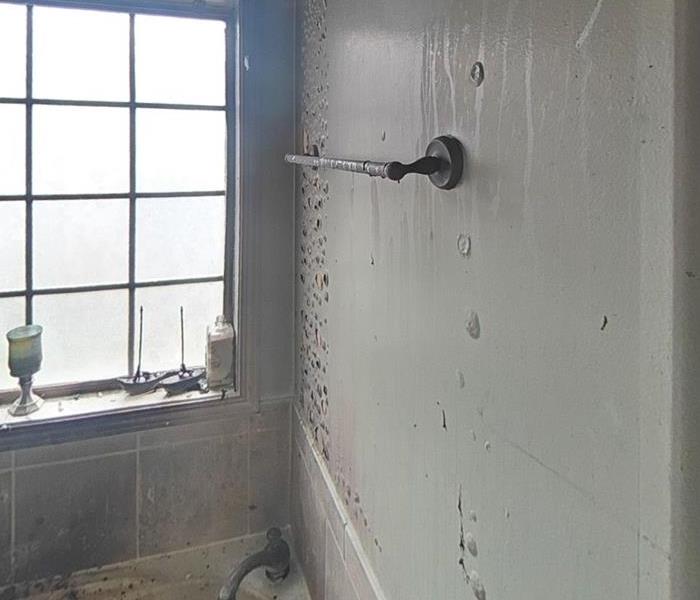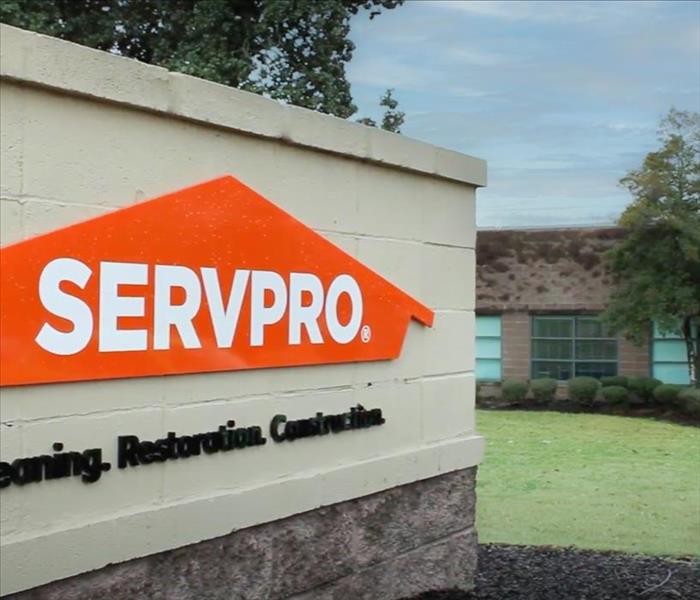Mold in New Construction: Prevention and Early Intervention for a Lasting Build
11/6/2024 (Permalink)
Even in newly constructed homes and buildings, mold can become a problem if proper precautions aren’t taken. While mold is often associated with older, poorly maintained structures, new construction can also fall victim to mold growth, especially in areas where moisture control and ventilation are inadequate. Addressing mold early in the construction process is essential to preventing long-term damage and ensuring a safe, quality-built environment.
In this blog, we’ll explore why mold can appear in new construction, how to prevent it, and the importance of early intervention to safeguard your investment.
Why Mold Can Develop in New Construction
Mold thrives in environments with moisture and poor ventilation. During the construction process, certain conditions can lead to mold growth, even before the building is complete. Common reasons mold might develop in new construction include:
- Moist Building Materials: Construction materials like lumber, drywall, and insulation can absorb moisture if they’re exposed to rain or humidity during construction. If these materials aren’t allowed to dry thoroughly, mold can begin to grow.
- Inadequate Drying Time: In some cases, the rush to complete a building on time means that materials like drywall, paint, and insulation don’t have sufficient time to dry completely before construction continues, trapping moisture inside.
- Poor Ventilation: In early construction stages, buildings may lack proper ventilation, creating a humid environment that encourages mold growth.
- Water Leaks or Improper Sealing: Leaks from plumbing, roofs, or windows that aren’t properly sealed can introduce moisture, leading to mold in hard-to-reach places.
- Unaddressed Site Conditions: Construction on land with poor drainage or high humidity levels can make a building more prone to moisture-related issues.
Key Areas at Risk for Mold in New Construction
Mold can grow in a variety of places during construction, especially where moisture can accumulate. Common areas include:
- Framing and Lumber: Wood framing is vulnerable to mold if exposed to water or excessive humidity during the build.
- Drywall and Insulation: If drywall and insulation are installed while still damp or in areas with leaks, mold can quickly form inside walls.
- Subfloors: Water exposure during construction can cause subfloors to retain moisture, allowing mold to develop under carpets or other flooring materials.
- HVAC Systems: Mold can build up in air ducts if the HVAC system is not properly protected from construction dust and debris, or if humidity levels are not controlled.
Preventing Mold in New Construction
Preventing mold growth during new construction requires proactive measures. By following these steps, builders and property owners can minimize the risk of mold and ensure a long-lasting, mold-free structure.
1. Control Moisture During Construction
One of the most effective ways to prevent mold is to limit the amount of moisture that materials are exposed to. Store building materials like lumber and drywall in dry, covered areas to avoid contact with rain and humidity. If materials do get wet, they should be dried thoroughly before being used in construction.
2. Ensure Proper Ventilation
Good airflow is crucial to prevent moisture from getting trapped inside a building. Install temporary fans or ventilation systems during construction to allow materials to dry out completely, especially in basements, attics, and other poorly ventilated areas.
3. Schedule Construction Around Weather
Avoid scheduling key construction phases, such as roofing or window installation, during rainy or highly humid periods. This reduces the chance that materials will be exposed to excessive moisture during critical phases of the build.
4. Use Mold-Resistant Building Materials
Mold-resistant drywall, insulation, and paints are available and can provide extra protection against mold growth in high-moisture areas like bathrooms, basements, and kitchens. These materials are designed to resist mold even in damp conditions, offering long-term protection for new construction.
5. Inspect for Leaks Early and Often
Regular inspections of plumbing, roofing, and windows throughout the construction process can help identify and fix leaks before they lead to mold. Properly sealing all openings and joints and ensuring that all water drainage systems are functioning will prevent moisture from seeping into the structure.
SERVPRO’s Role in Mold Remediation for New Construction
If mold is found during construction, professional remediation services like SERVPRO® can provide the expertise needed to remove mold and ensure the building is safe. SERVPRO’s mold remediation services include:
- Inspection and Assessment: Identifying the source of moisture and the extent of mold growth.
- Mold Containment: Preventing the spread of mold to other parts of the building.
- Air Filtration: Using air scrubbers and HEPA filters to remove mold spores from the air.
- Mold Removal: Safely removing mold-infested materials and cleaning surfaces with antimicrobial treatments.
- Moisture Control: Addressing the underlying moisture issues to prevent future mold growth.
By working with SERVPRO, builders and property owners can ensure that mold is fully eradicated and the building is protected against future mold issues.
Mold prevention and early intervention during new construction are critical to ensuring the long-term durability and safety of the building. However, if mold is detected, professional remediation services like those offered by SERVPRO of Bartlett/Cordova are essential to address the problem quickly and effectively, ensuring your new construction remains mold-free for years to come.






 24/7 Emergency Service
24/7 Emergency Service

